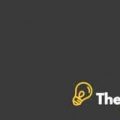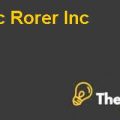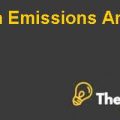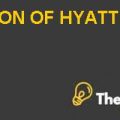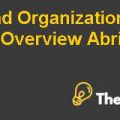
1. History of Calaveras
In the year 1883, Calaveras Vineyards was founded by Esteban Calaveras that supplies variety of wines and it is situated in a valley of California called Alameda valley. The area of the company consists of 220 acres, in which 175 acres are covered by Vineyards. However, the remaining 45 acres consist of different equipment sheds, a building specifically for the winery and a farmhouse. In addition to this, the farmhouse of the company includes guest rooms with offices and sales room.
Calaveras has expanded its winery and vineyard in order to meet the expected demand from restaurants and retailers after 1950 s. However, ownership of vineyard changed from one large wine producer company to another during the years 1986, 1990 and 1992.
Calaveras managed to stabilize its market position and brand image regardless of the continuous changes in the marketing plans and ownership. Its sales price continued to rise from 29.52 dollars to 44.26 dollars during the period from 1989 to 1993 through its strategy about quality control and market segmentation.
There were five categories in Calaveras’ product range such as estate wine, which was sold at super premium, a selected vineyard vine which was also sold in superpremium category, California wines which were of middle quality, generic wines which were of lesser quality even from California wines.The last was the special accounts wine, which was the lesser quality wine among the other wines listed.
Dr. Lynna Martinez introduced many wines in the premium category in order to make Calaveras a premium segment of the wine market in 1990. This move proved to be a good move from the management with respect to attained desire objectives.
2. Plans to collect Account Receivable
The management of the company decided to adopt a new marketing strategy for the purpose of recovering receivables on behalf of Calaveras. For this purpose, they contacted Wintson Fendall, who is a well-established marketer of wine in that area in which Calaveras’ sales are highest.
Under the contract, Wintson is expected to collect all receivables on behalf of Calaveras and after receiving will remit them to Calaveras. The contract also includes a clause that Wintson will pay Calaveras all receivables on a non-recourse basis, which will leave unpaid after 90 days.
Under a non-recourse arrangement, Wintson will be responsible for unpaid receivables because in non-recourse basis, the factor assumes the risk of nonpayment.
On such basis, Calaveras’ risk will reduce to almost zero, but Wintson will charge high interest also by assuming the risk of bad debts and non-payments from customers.
3. Free Cash Flow for 1994-1998
|
Free Cash Flows |
||||||
| Year | $ Million |
1994 |
1995 |
1996 |
1997 |
1998 |
| EBIT |
929.8 |
1085 |
1224 |
1301 |
1420 |
|
| Tax rate |
37% |
|||||
| Accumulated Dep |
116 |
283 |
499 |
766 |
1082 |
|
| Amortization |
60 |
60 |
60 |
60 |
60 |
|
| Capital Expenditure |
250 |
250 |
250 |
250 |
250 |
|
| Change in WC |
573.6 |
639 |
859.4 |
1208 |
2060 |
|
| Less previous inventory |
422 |
338 |
659 |
993 |
1908 |
|
| Change in net WC |
151.6 |
301 |
200.4 |
215 |
152 |
|
| Tax rate |
344.026 |
401.45 |
452.88 |
481.37 |
525.4 |
|
| FCF |
360.17 |
475.55 |
879.72 |
1180.63 |
1634.6 |
|
4. Recommend Discount Rate
By taking the projected data from the balance sheet, it is expected that debt to equity ratio for the year 1994 will be 28 % of equity and 72 % of debt approximately. The cost of debt is given, however the cost of equity is not given in the case. The beta of comparative industries is also given in the question. By incorporating the betas of comparative industries, it is estimated that the beta of Calaveras will be 0.906.
It is supposed that the risk free rate will be of government’s 30 years T-bond rate, which is 5.85%. By incorporating all these values and the value of the market premium rate which is 7.4%, it is expected that the cost of equity will be 10.9%.
Therefore, by putting all these values into the formula of WACC, it is expected that the weighted average cost of capital will be 7.37% for the projected year of 1994. By taking the figures from the projected balance sheet, it is visible that the debt and equity ratio is changing on a yearly basis.
Through the calculation performed by incorporating debt and equity ratio of each projected year, it is expected that the WACC will increase in the coming years due to the increase in the percentage of the equity. Therefore, the value of WACC used in the calculations to discount free cash flows is found by calculating the average WACC of projected years................................
This is just a sample partial case solution. Please place the order on the website to order your own originally done case solution.


